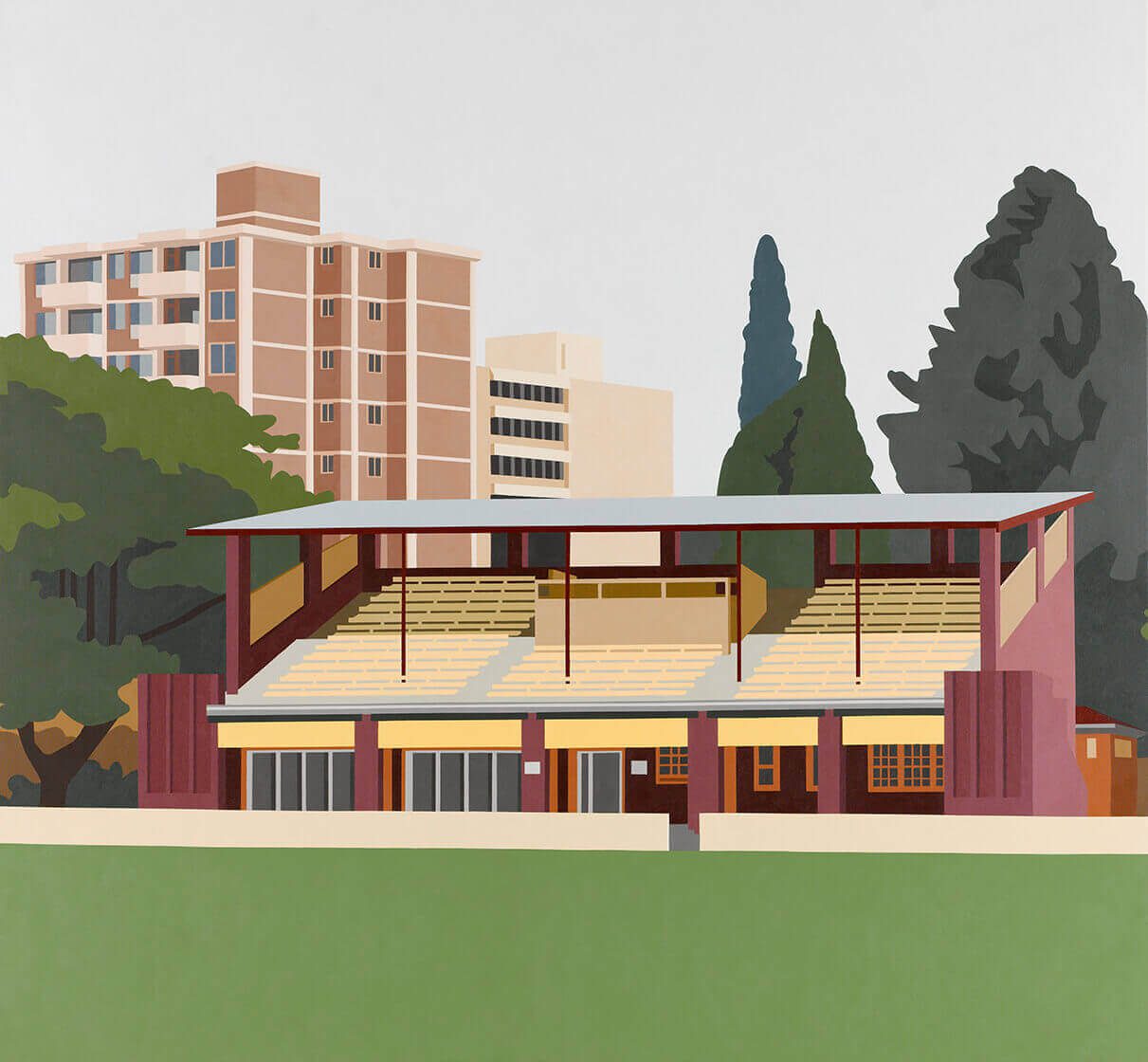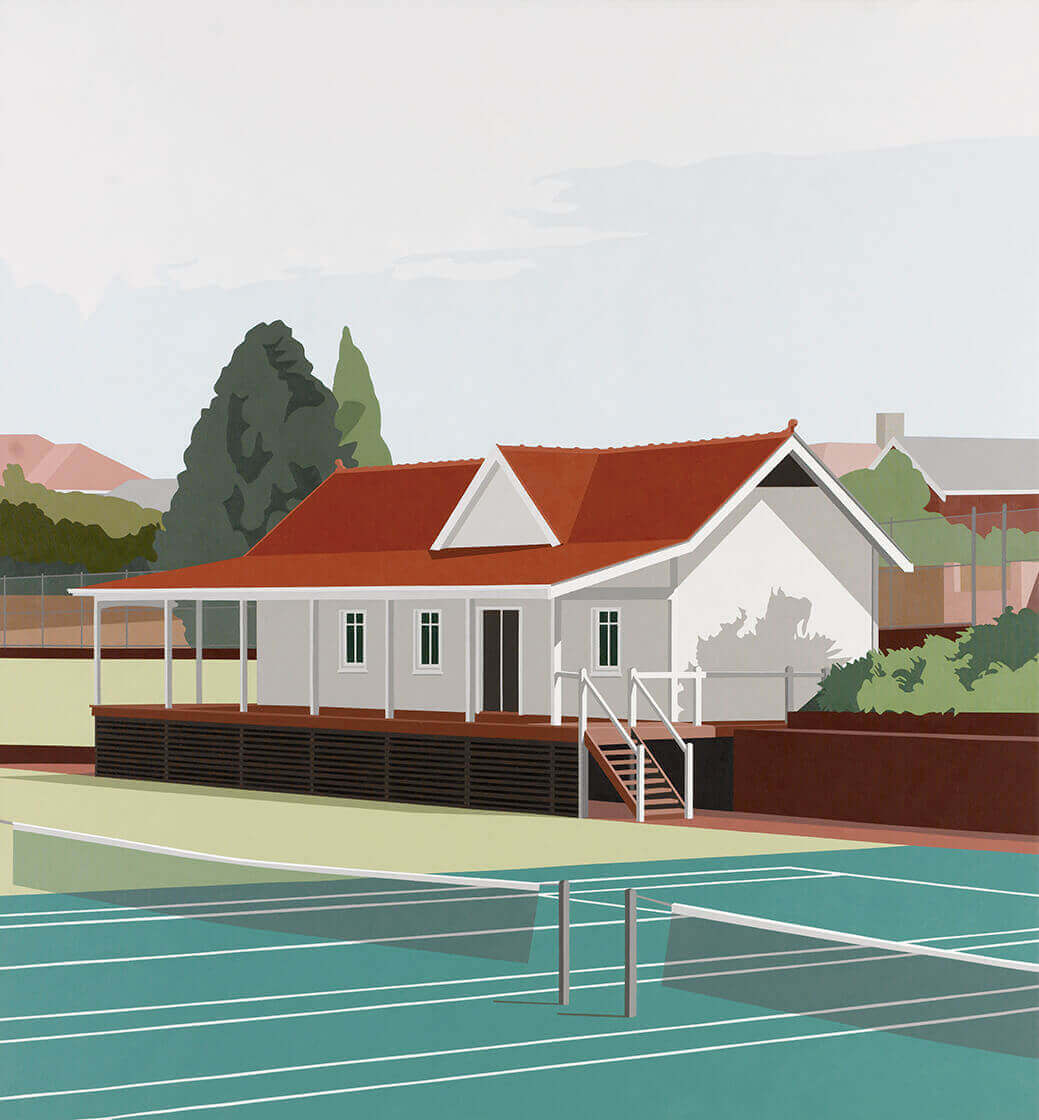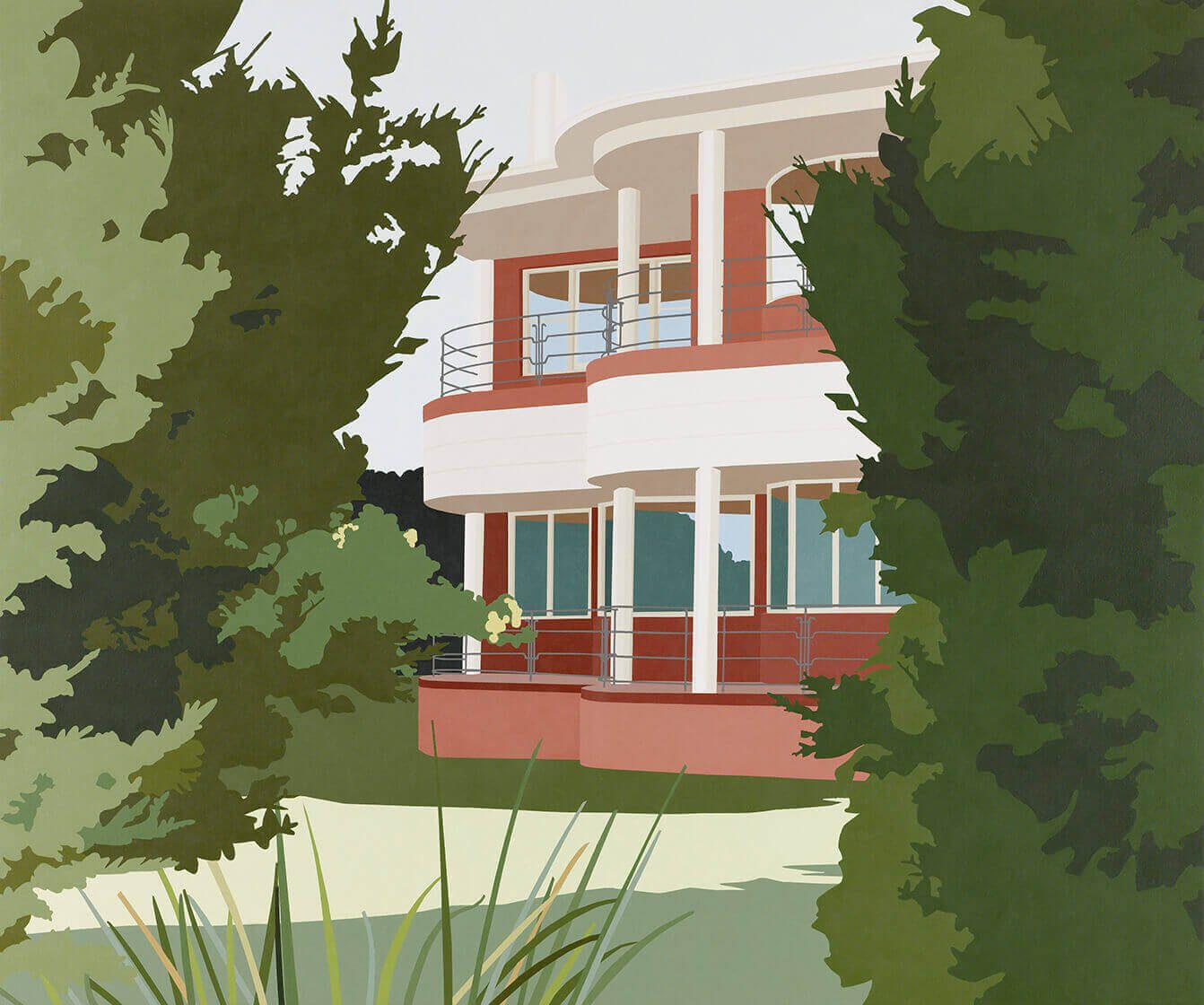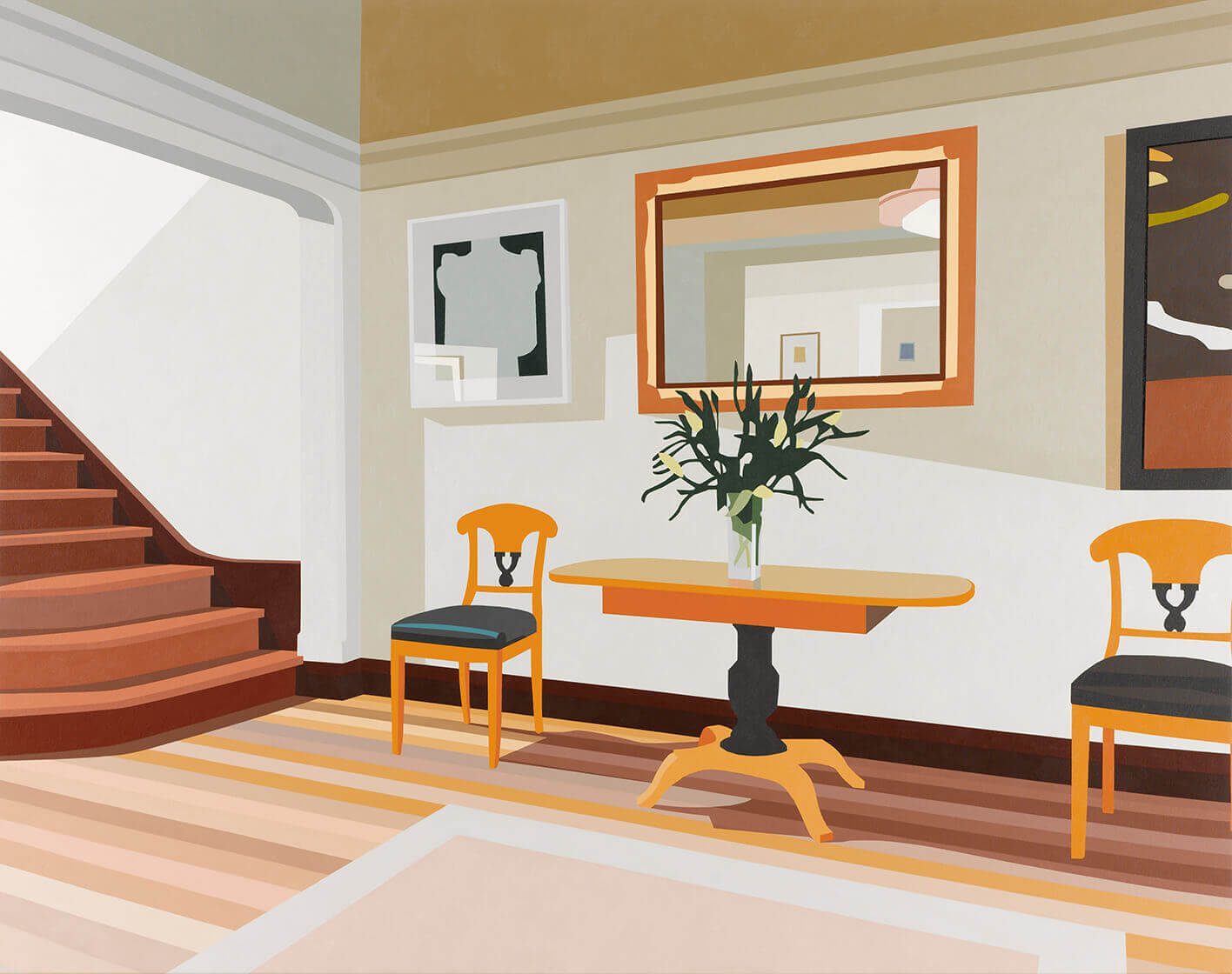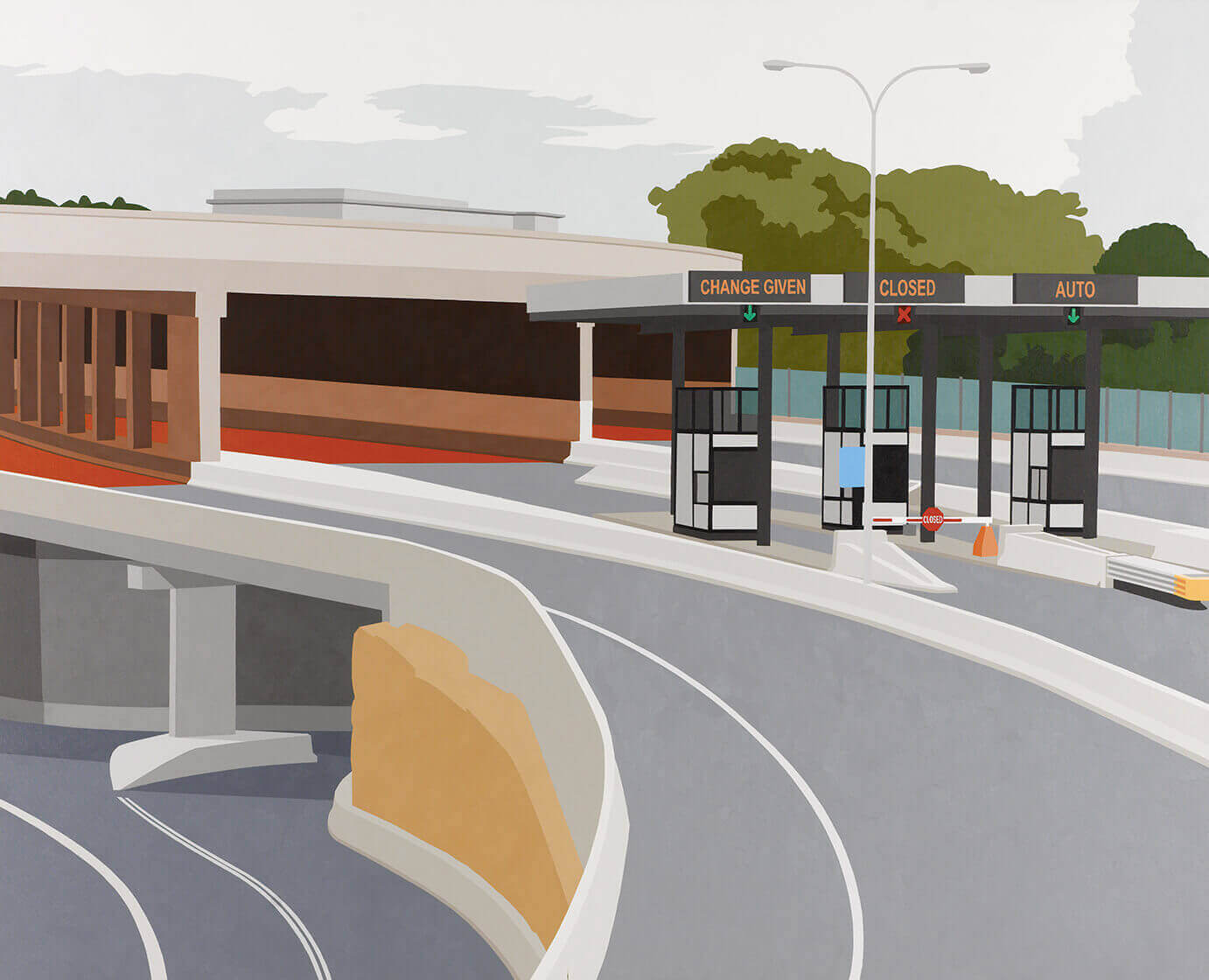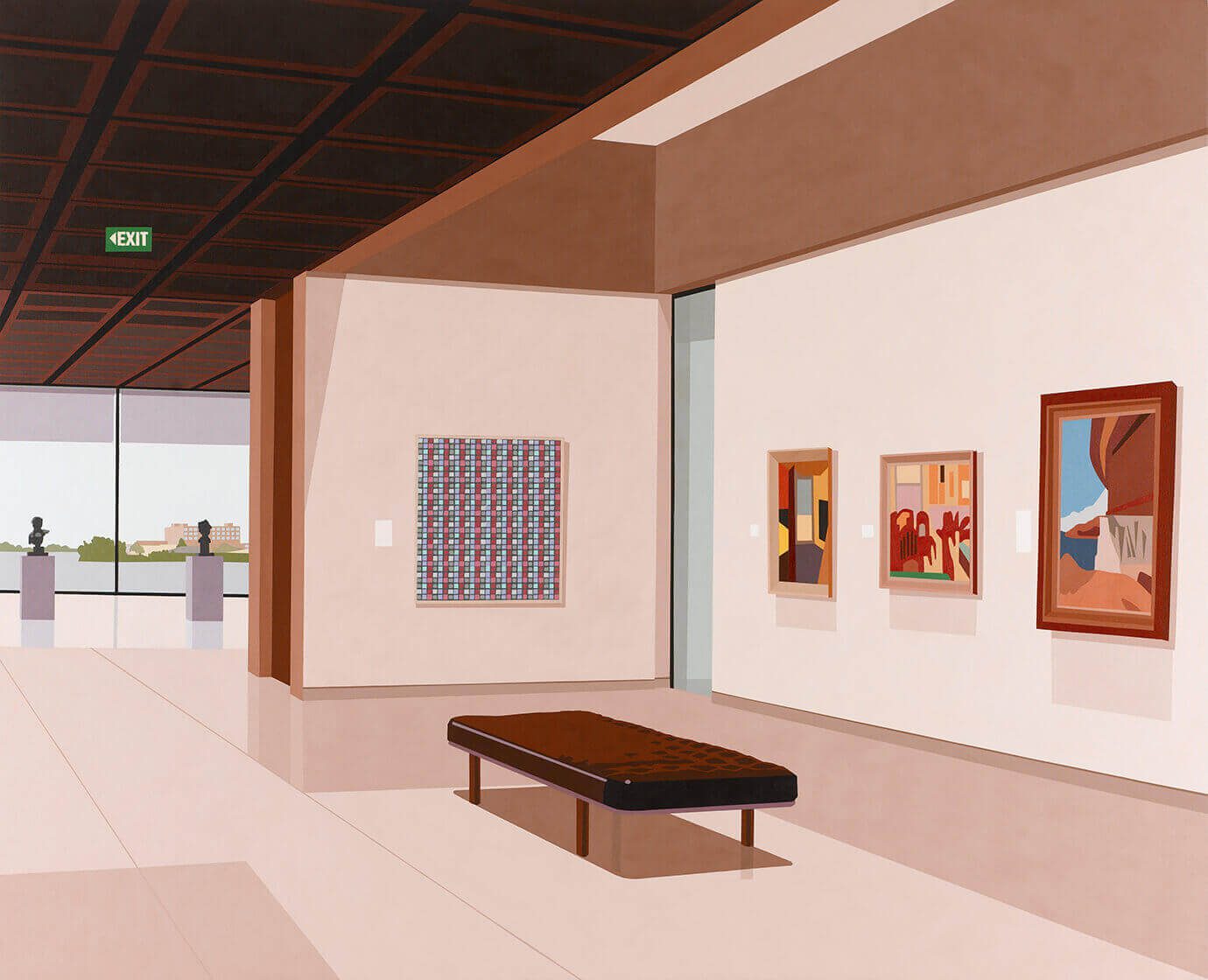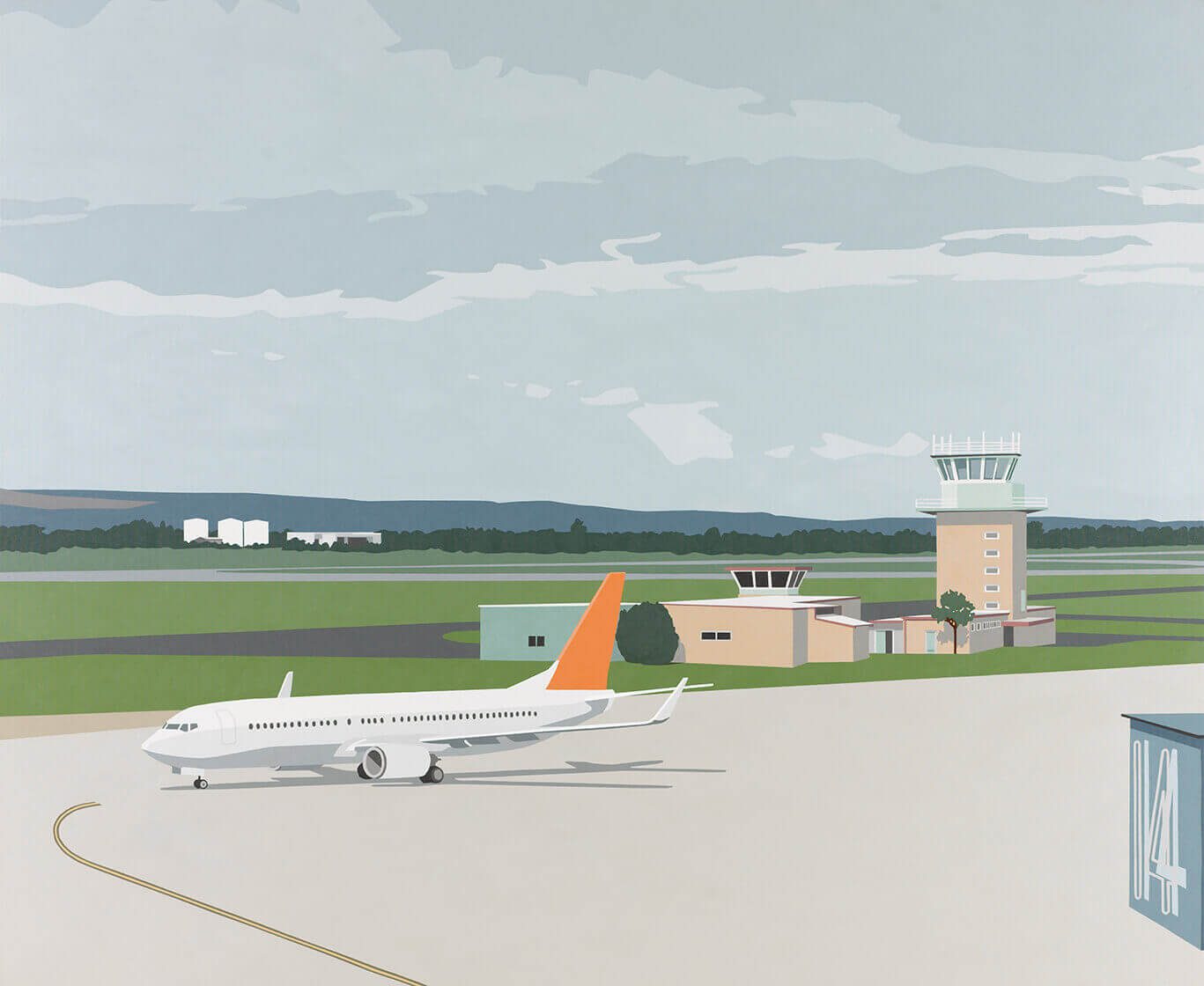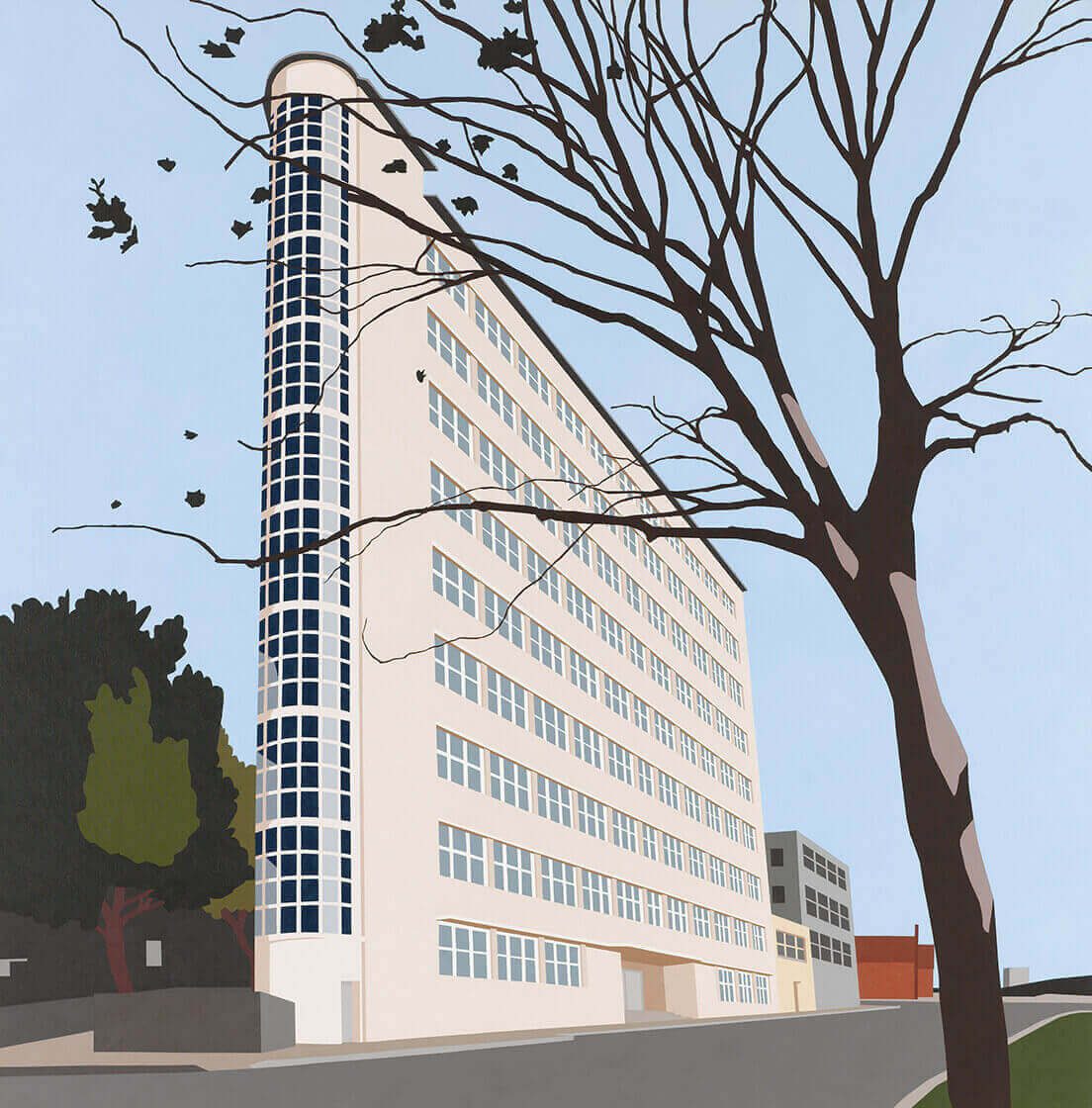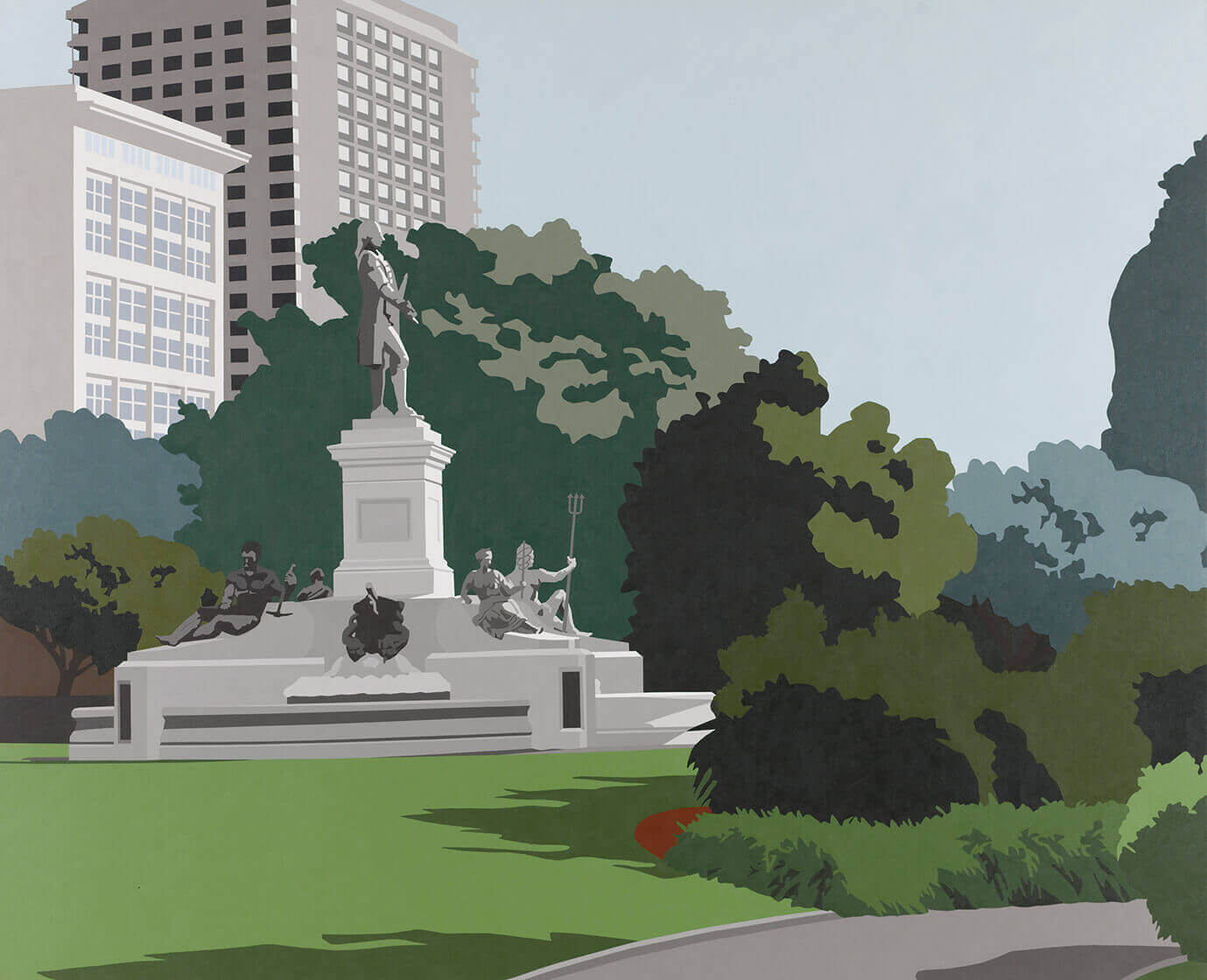Flatland: A Continuing Romance (figures 17 – 25), July–August 2008, Johnston Gallery
Neutralising the Cacophony
Wendy Walker, May 2008
Traditional cities owe their beauty to the combined corsets of ignorance, poverty and social rigidity, material deprivation and technological constraint. Conversely, the visual cacophony of our latter-day burb is a direct result of capitalist democracy, as the crummy modern outskirts of all those picturesque medieval Euro-towns attest.’
Sleekly representing transitional spaces – a swooping expressway, a cricket ground, an art gallery, an airport tarmac – Joanna Lamb’s persistently unpeopled depictions of the urban/suburban built environment seem not so much empty as evacuated. Are we then to interpret Lamb’s large and consciously clinical paintings as an indictment (albeit less strident) of the monotony, the unvarying tedium of the Australian urban/suburban environment? Lamb grew up in suburban Perth, where she observes: ‘There seems to be a tendency toward things being pleasant and nice and not too challenging or confronting when it comes to anything from lifestyle to architecture.’2 Whereas Howard Arkley revelled in strident colours, patternation and an idiosyncratic vocabulary of domestic architectural and design features – including wrought-iron screen doors, letter boxes, balustrades and awnings – in habitually eradicating all such distinguishing elements, Lamb achieves an unthreatening homogeneity that constitutes a mask, a facade of palatability.
It is a veneer that is reminiscent of the sort of relentlessly bland and ultimately cloying environment in Peter Weir’s 1999 film The Truman Show and which the protagonist (played by Jim Carrey) becomes increasingly desperate to escape. Other films of the last decade, such as Pleasantville (1998), Far from Heaven (2002), American Beauty (1999) or The Virgin Suicides (1999) further confirm Hollywood’s enduring view of suburbia as ‘a place that fosters widespread neuroses, creating frustrated and entrapped wives/mothers, ineffectual, emasculated husbands/fathers, and rebellious, directionless children.’3
These dark visions of suburban dystopia are counterpointed by the idealised and frequently saccharine portrayal of middle-class suburban life presented in the 1950-60s television sitcoms – The Donna Reed Show, Leave it to Beaver or Father Knows Best 4 – and revisited in the 1970s, to cite one example, in the long-running Happy Days series. (Perhaps paradoxically, Lamb’s work, in which buildings appear remembered rather than actual, is at times imbued with a similar sense of nostalgia.)
In Flatland: a continuing romance, Lamb for the first time reveals the interiors of her dwellings, shifting beyond her generic realisations of suburban houses – distinguished only by an interchangeable palette of pleasing pastels – to encompass public spaces such as a tennis club, an airport, a monument in a Botanic Gardens and so on.
The vacant interior of a public art gallery features two of Grace Cossington-Smith’s (similarly unpeopled) interiors and interestingly – since it represents another of Lamb’s liminal zones – an abstracted version of Cossington-Smith’s The curve of the Bridge (1928-29).
Within this new body of work, one painting stands apart – not solely because the tall narrow modernist building is recognisably Stephenson and Turner’s United Dental Hospital (1937), located in Surry Hills in Sydney, but also for the inclusion in its foreground of the dominant silhouette of a realistic, but apparently dead tree – a familiar sight in the recent drought-stricken Australian summer – notable for the detail of falling black leaves (although the background trees are realised in Lamb’s trademark style of almost abstract, tonal blocks of colour). With this disruption of Lamb’s carefully-cultivated, bland pastel surfaces, the final work in Flatland: a continuing romance accordingly introduces a new strand of narrative – the infiltration of a sense of foreboding.
Notes
1. Elizabeth Farrelly, Blubberland: the dangers of happiness, Sydney, NSW: University of new South Wales press Ltd, 2007, p. 177
2. Joanna Lamb, email communication with the author, 18-04-2008
3. Robert Beuka, ‘Cue the Sun: Soundings from Millennial Suburbia’, Iowa Journal of Cultural Studies, Fall, 2003
4. Such programs proliferated – The Adventures of Ozzie and Harriet (1952-1966) was another. Lacking an Australian equivalent of the period, this media construct of an American dream of harmonious family life in suburbia also became at a time of economic growth, the Australian vision of a post-WWII promised land.
